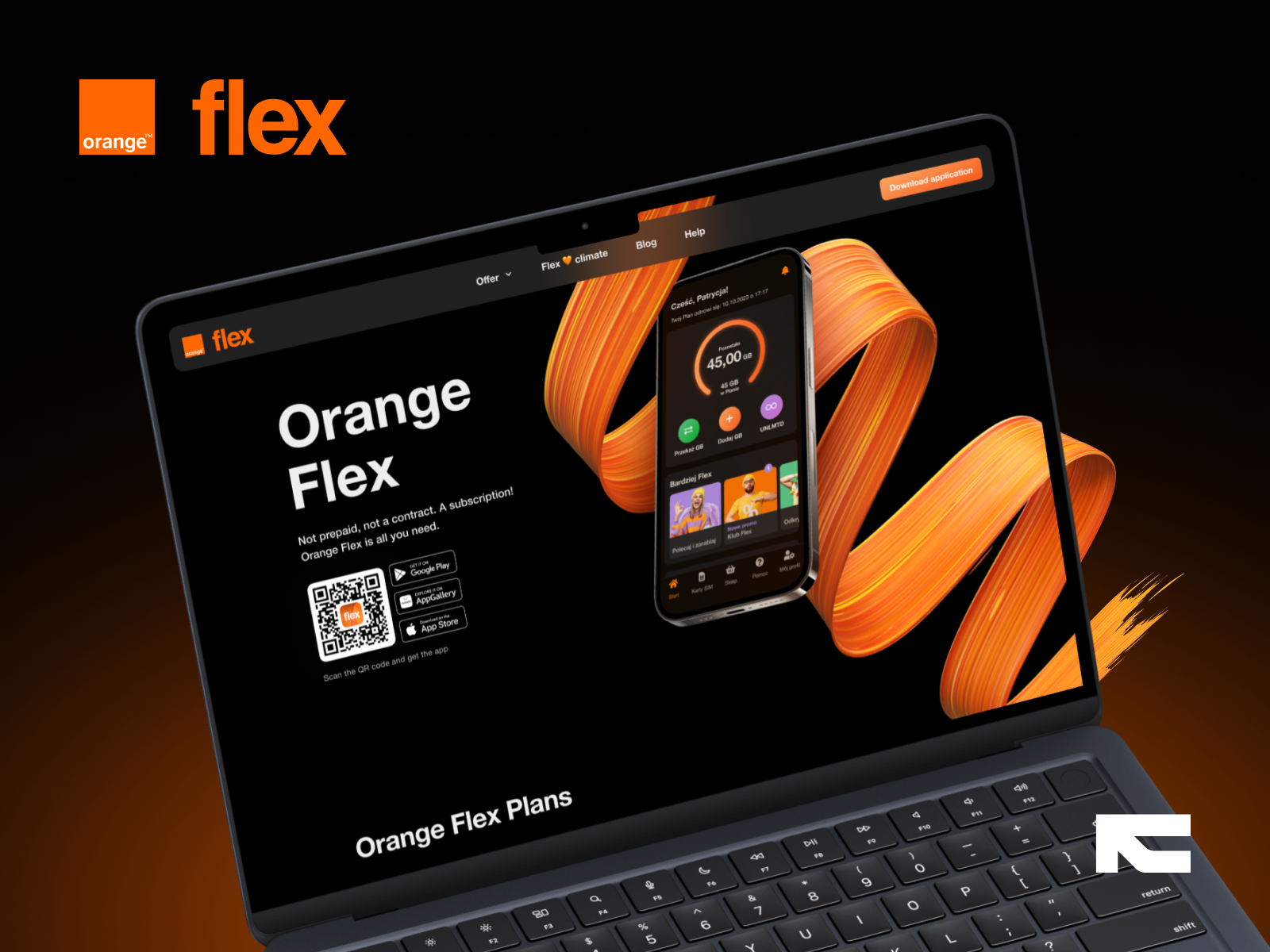Back to list
Redesign of the Orange Flex Website

About
Future Mind collaborated with Orange to redesign the Orange Flex website, delivering a mobile-first, user-centric experience that significantly improved user engagement and satisfaction across all digital touchpoints.
Client
Submited by
Realization period
Technologies
Team
Services
case study
Project Background:
The Orange Flex website was redesigned to address evolving user expectations and the growing demand for a seamless mobile experience. Orange aimed to position its digital offerings as leaders in the competitive telecommunications market.
Challenges Faced:
The key challenge was balancing an innovative design with the need for consistency in Orange’s brand identity. Additionally, creating a responsive design that functioned flawlessly across various devices was crucial.
Project Execution Process:
The project involved an in-depth research phase, where the team meticulously analyzed user behaviors, leading to a design that is not only visually appealing but also highly functional. Future Mind employed a responsive web design approach, ensuring seamless user experience across all platforms. The integration of the latest design systems allowed for a consistent and coherent user interface, which was crucial for maintaining Orange's brand identity while offering an intuitive navigation experience. Key features of the redesign include a mobile-first approach, ensuring that the website delivers an optimal experience for the majority of Orange Flex's user base, who access the site via mobile devices. The user journey was reimagined to be more fluid, with simplified steps for key actions such as signing up for services or managing plans.
Tools and Frameworks Used:
Figma was utilized for wireframing and design, enabling seamless collaboration between designers and developers. React was the primary framework used for frontend development, providing a scalable and responsive solution.
Project Results and Achievements:
Post-launch analytics showed a 25% increase in user engagement and a significant reduction in bounce rates, validating the effectiveness of the design and technological choices. User feedback has been overwhelmingly positive, with many praising the site’s intuitive navigation and sleek design.
Lessons Learned:
This project underscored the importance of a user-first approach in design and the need for ongoing user testing to adapt to changing user behaviors.

